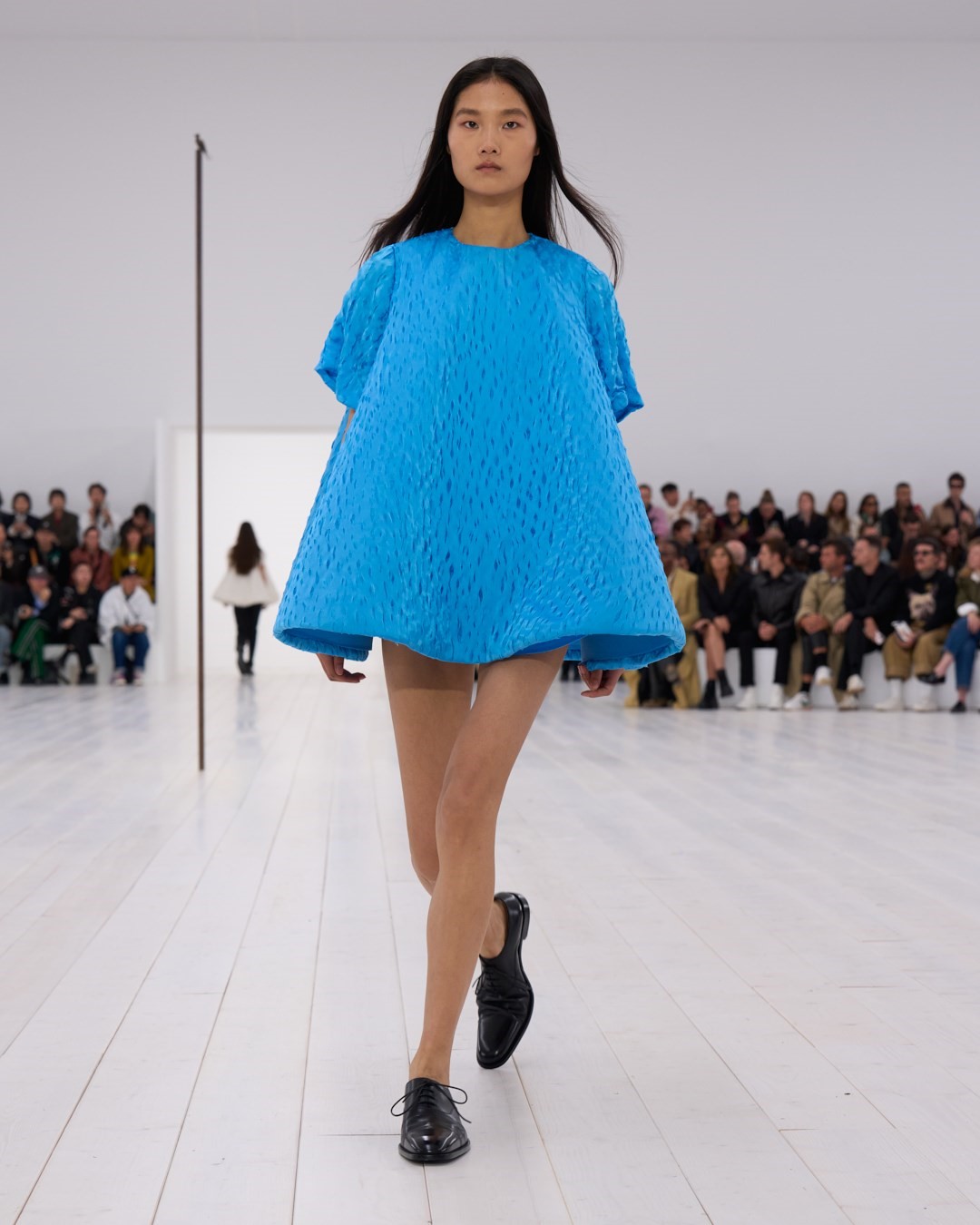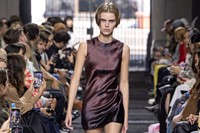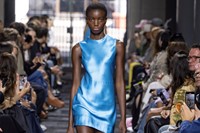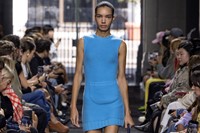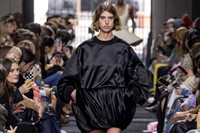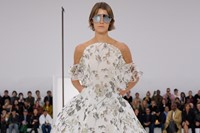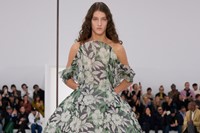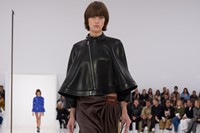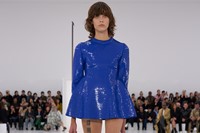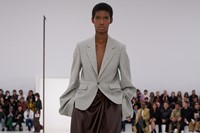Designers, generally, can’t split their personalities – whenever one is doing double-duty, designing two brands simultaneously, there are echoes and links, sometimes direct aesthetic mirrors between their collections. So it’s inevitable that there would be an affinity between what Jonathan Anderson put in the catwalk for his own slick JW Anderson show in London and in his extraordinary Spring/Summer 2025 presentation for Loewe in Paris.
Yet with Anderson, the connections are more abstract than fashion’s usual facile reflections, like a shared colour palette or a synchronised shoe. Watching his JW Anderson show I thought of façadomy, the much-maligned modern architectural practice of blasting out the innards of old spaces to preserve just a picturesque crust, as required by planning bureaucracies or, maybe, simply to make a dull office building look prettier. That’s not to say that Anderson’s show didn’t have guts – he does, so it did – but its pivot was the notion of façade, of dirndl skirts folded into panels at the front like aprons, the papery textures of lace and in details like zips and pockets compressed to prints on slick, resolutely flat duchesse satin. Of a similar fashion, at Loewe, Anderson wrote of giving a “prominence to surfaces” – reduction was the idea, and razor focus.
Superficially, these collections were poles apart, bar a couple of shared sticky-out skirt silhouettes, and an exploration of grey sweatshirting – marl hoodie details printed on more duchesse at JW, and executed in overlapping feathers at Loewe, printed with a portrait of the composer Johann Sebastian Bach like a piece of fan merch. Otherwise, the links between these distinct Anderson shows were purely ideological, maybe philosophical. How about the idea of rampant locomotion? The driving rhythm of his London show was notable, soundtrack thumping as models streaked by in dresses stripped down, details smushed into the body as if engineered for speed. By contrast, at Loewe shapes oscillated between taut suiting and vast, bubbly volume vibrating, boned and wired to undulate as the models progressed. There was a tension between dynamic motion and the static, fantasies of windswept romance made material, clothes dancing around the body, free fragments of cloth flowing.
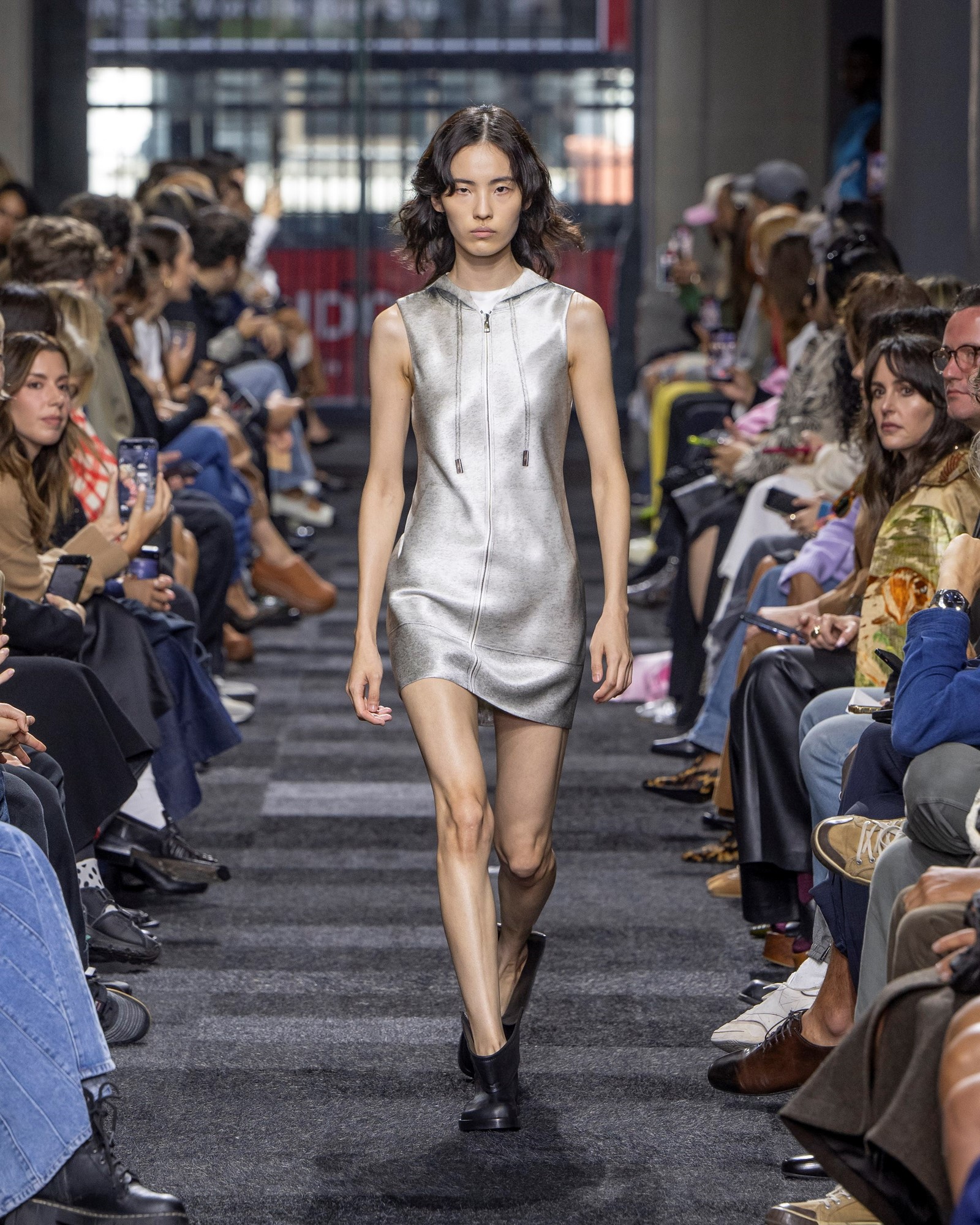
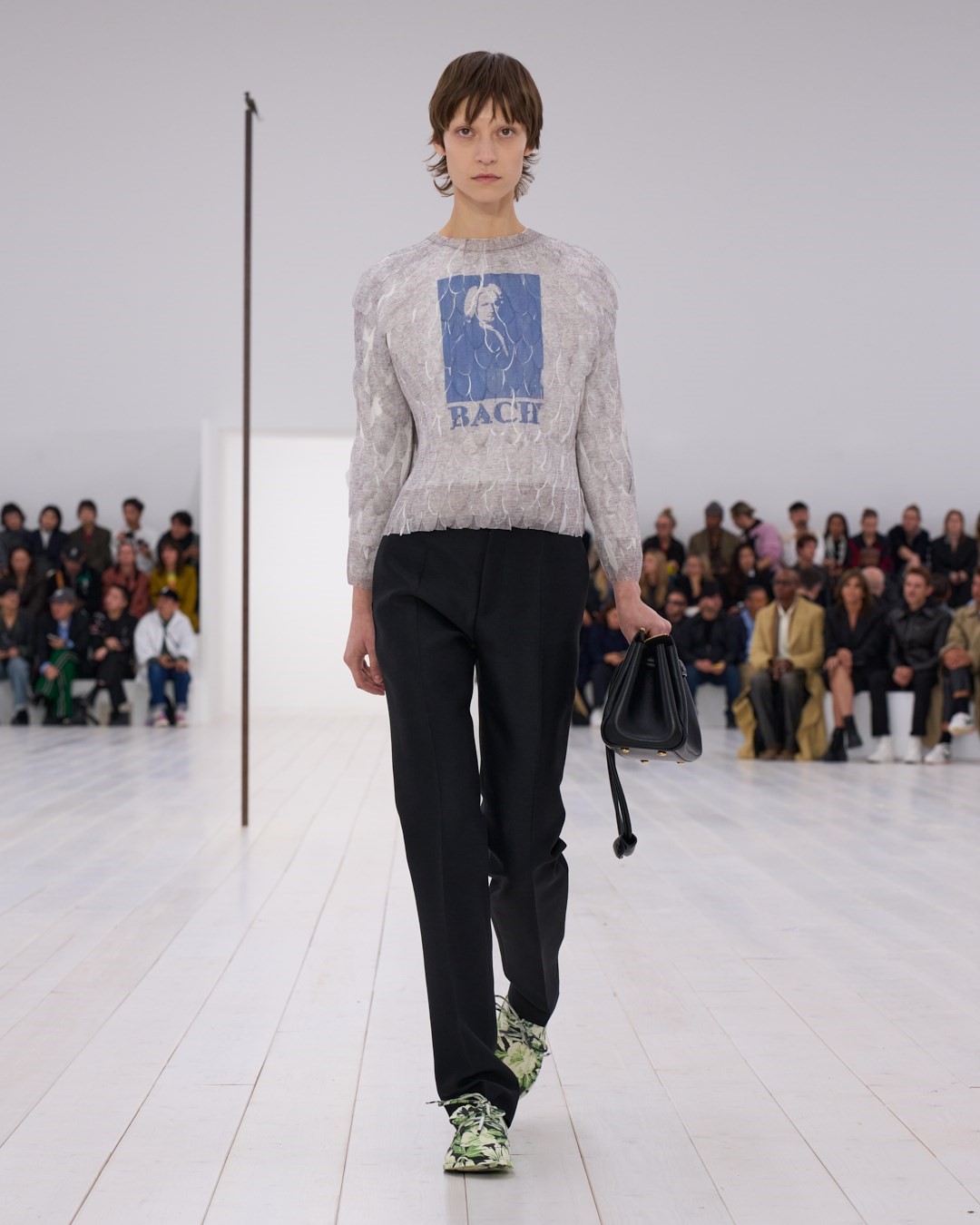
There’s this whole theory attached to the division of genders through dress in the Industrial Revolution: that men’s suiting, as it evolved in the 19th century, was built like a machine, designed for labour, while women’s conformed to what the American economist and sociologist Thorstein Veblen memorably dubbed “conspicuous leisure”. Hence Anderson gave his own-label dresses the power of a suit, cropped high to free the leg, suctioned close to the body, nothing extraneous to impede movement. That said, the 19th-century crinoline, vast though it was, actually lightened women’s load, buoyed as it was on a hollow whalebone cage rather than stuffed solid with cumbersome petticoats. It allowed women to move, and many took up ”strenuous walking” in their newly freeing skirts. That’s what I thought about as Anderson’s hyper-modern, hyper-mobile iterations swayed by at Loewe.
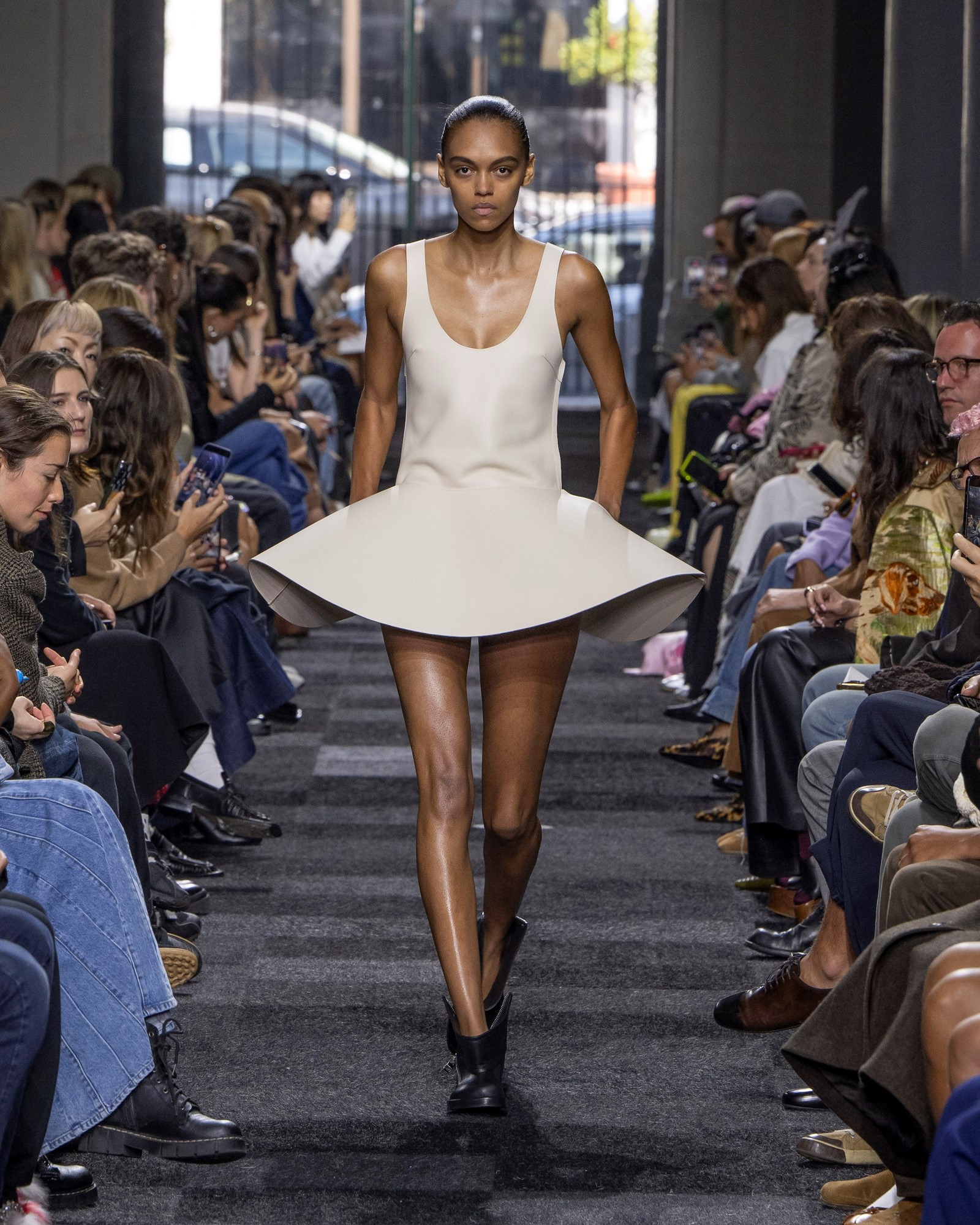
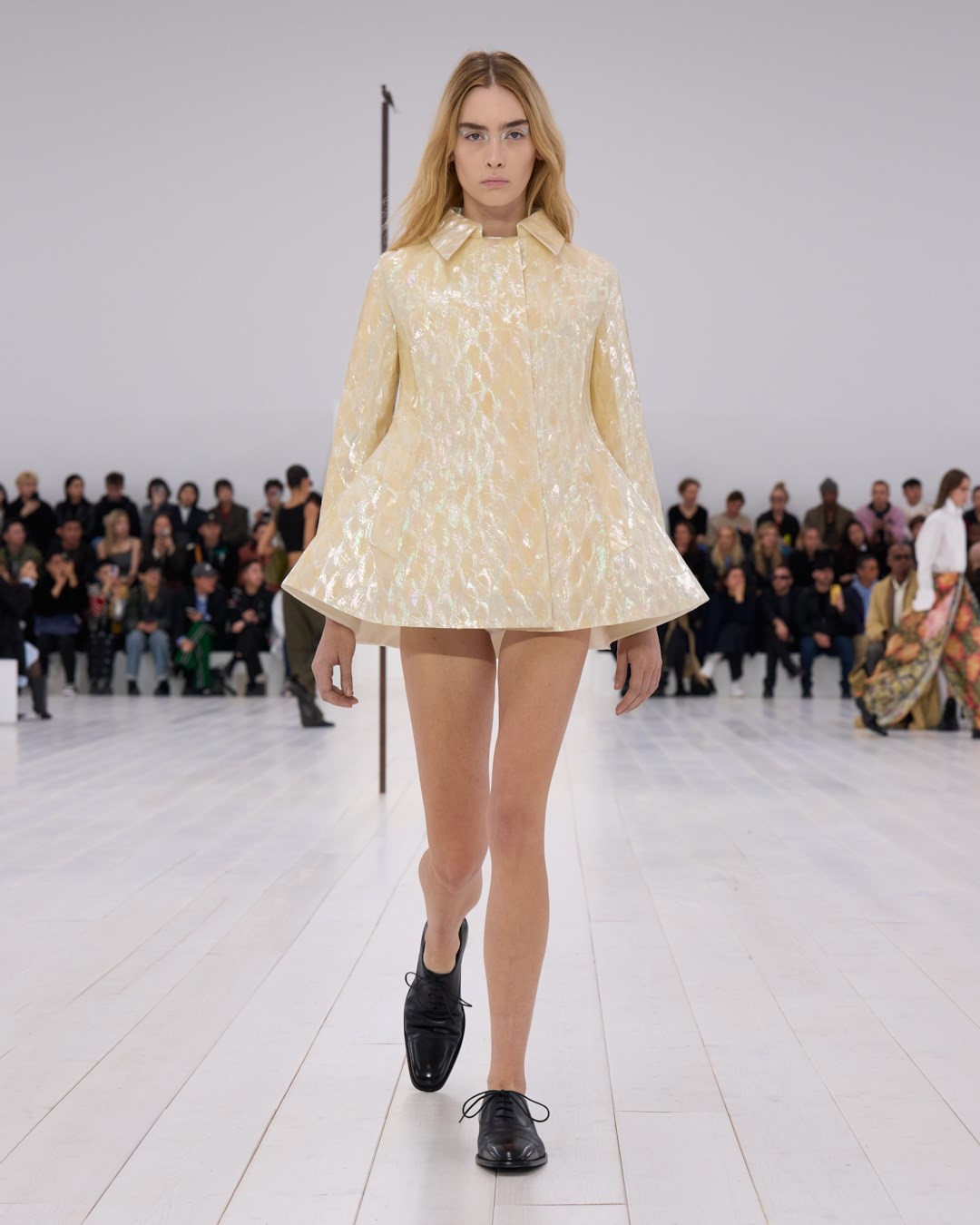
And from silhouette, to surface, which as Anderson indicated was an obsession. Those dresses bubbled and flowed, in direct contrast to stiff carapaces of black-blue or white nacre, intricately tessellated and sliced into stiff, highly impractical but utterly extraordinary little A-line jackets. Others transposed that idea of stiffness to fabric, curving coats away from the body like wood shavings or binding gabardine skirts with brass like a Loewe handbag. And others were smothered in feathers, used as textured canvasses for prints of masterpieces – Van Gogh’s irises and sunflowers, a Manet – or of maestros of composition – Chopin, Mozart, Bach. And it’s fair enough to say that, in his oeuvre, Anderson is a maestro, and these two collections were, each, a masterpiece of composition, flowing between different notes and nuances, never losing their harmonies.
